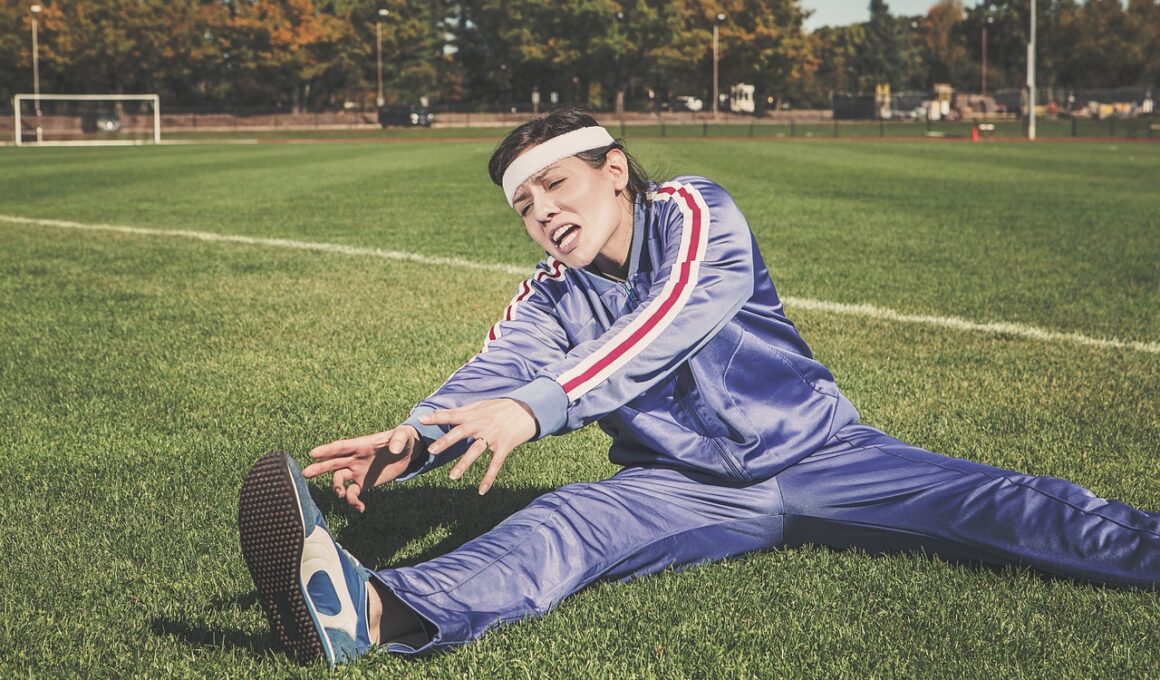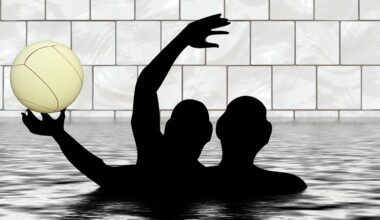The Benefits of Proprioceptive Training for Athletes
Proprioception is a vital sense that helps athletes control their movements and body position. This training enhances the ability to sense one’s body relative to the surrounding environment. By focusing on proprioceptive training, athletes can improve their balance, coordination, and overall performance in various sports. Proprioceptive training involves exercises that challenge the body’s awareness and response to movement. These exercises help develop muscle memory and improve athletic performance by allowing for rapid responses to changes in the environment. Enhanced proprioception leads to better agility, which is crucial for success in sports requiring quick directional changes. Additionally, improved balance can significantly reduce the risk of injuries resulting from falls or missteps during high-intensity activities. Coaches and trainers should incorporate specific exercises into their training regimens to maximize athletes’ potential. Activities such as balance boards, stability balls, or agility ladders promote proprioceptive awareness. Furthermore, proprioception training can be easily tailored to individual needs, ensuring personalized development for each athlete. Ultimately, investing in proprioceptive training lays a strong foundation for athletic excellence and improved performance in competitions.
Understanding how proprioception works is essential for athletes aiming to enhance their skills. Proprioception is the body’s ability to perceive its position and movement in space, which is crucial in many sports. Athletes who focus on developing proprioception can expect significant improvements in their technical skills. As they enhance body awareness, they become more adept at executing complex movements effortlessly. Strong proprioceptive abilities enable quick adjustments in response to external factors, like a shifting opponent or an obstacle. This heightened awareness can lead to more precise movements and better decision-making during competitions. For example, a soccer player can better anticipate where to position themselves to receive a pass or evade a defender. Moreover, it aids in reaction time during fast-paced games, offering a competitive edge. Additionally, proprioceptive training contributes to muscle strength and endurance, allowing athletes to perform at peak levels longer. Creating a consistent proprioceptive training routine is vital for success. Athletes should consult trainers to design individualized training plans while also incorporating appropriate recovery times to avoid overtraining.
The integration of proprioceptive exercises into warm-up routines can yield remarkable benefits for athletes. These exercises prepare the body for more intense activity while enhancing overall performance. A proper warm-up increases blood flow to the muscles, promoting flexibility and reducing the likelihood of injury. Incorporating proprioceptive tasks into warm-ups can effectively activate the neuromuscular system. Activities like single-leg balances or dynamic stretches engage core muscles, fostering stability. By ensuring stable footing and body control, athletes can perform their best during competitions. Regular engagement in these exercises leads to better movement quality, allowing for more efficient energy use. This efficiency can greatly impact explosive movements, like jumping or sprinting, maximizing athletic output. In addition, warming up with proprioceptive exercises stimulates mental focus, which is critical for peak performance. Athletes who experience improved focus can better handle the pressure of competition. Including these exercises will help athletes develop better kinesthetic awareness, which benefits their performance in all aspects of their sport. Moreover, balancing elements can be integrated into regular training sessions, cultivating a lifelong engagement with proprioceptive training methods.
Furthermore, proprioceptive training proves beneficial for injury rehabilitation. Athletes recovering from an injury can use proprioceptive exercises to rebuild their strength and balance effectively. After an injury, restoring proprioception is essential for fully regaining functionality and preventing future injuries. These exercises promote good joint stability, which reduces the risk of re-injury. By participating in controlled proprioceptive tasks, athletes can gradually relearn movement patterns safely. This safety factor is crucial, especially during rehabilitation phases, as athletes progress. Closed kinetic chain exercises, like squats on unstable surfaces, can be particularly effective. These exercises mimic the conditions encountered in sports, providing a smooth transition back to play. Additionally, incorporating proprioceptive training throughout an athlete’s career fosters resilience, ensuring they remain healthier during physical activities. Becoming aware of the importance of proprioception in injury management is crucial for all athletes and coaches. Maintaining optimal proprioceptive function can significantly improve an athlete’s long-term physical health and performance. Ultimately, athletes should prioritize proprioceptive training not just for performance enhancement but also as a preventive measure against injuries.
Choosing Effective Proprioceptive Exercises
When selecting proprioceptive exercises, athletes should consider their specific sports and movement patterns. Tailoring exercises to the demands of each sport ensures the training is practical and effective. For strength-focused sports, exercises like balance beam walks and stability ball push-ups can be beneficial. Meanwhile, athletes in speed-oriented sports may focus on lateral shuffles on unstable surfaces, enhancing their agility. Resistance bands can also be incorporated into proprioceptive training, challenging balance while engaging multiple muscle groups. Furthermore, visual or cognitive challenges added to exercises can increase their effectiveness. For example, athletes can perform balance tasks while following a moving object or remembering sequences. These variations help enhance the mind-body connection vital for elite performance. Setting measurable goals for proprioceptive training is also essential in tracking progress. Athletes should regularly reassess their balance and coordination capabilities to ensure continuous improvement. Working with professional coaches can further optimize the design of training programs tailored to individual needs. Well-structured training plans help maintain motivation and ensure athletes remain focused on their objectives. Regularly progressing in difficulty will yield the most significant results in proprioceptive training.
The psychological benefits of proprioceptive training cannot be overlooked. Engaging in activities that improve balance and coordination can boost athletes’ mental well-being. Enhanced proprioceptive abilities foster greater confidence in one’s physical capabilities. Athletes who feel secure in their body’s movements are more likely to take calculated risks during competitions. Additionally, increased proprioceptive awareness can lead to reduced anxiety as athletes develop a deeper connection with their bodies. This mental clarity ultimately translates into improved focus during performance. Athletes who regularly engage in proprioceptive training often report feeling more centered and grounded, which can positively affect overall athletic performance. This feeling of control can increase resilience against distractions or pressure experienced in competitive environments. Furthermore, regular training also encourages positive self-perception and self-efficacy. These psychological benefits reinforce the importance of ongoing proprioceptive exercises. Incorporating mindfulness techniques may also enhance the mental aspect of proprioceptive training. Athletes performing exercises with directed attention can significantly improve their awareness of their movements. In conclusion, the mental and emotional advantages stemming from well-developed proprioception are just as important as its physical benefits in achieving athletic excellence.
Incorporating technology can further enhance proprioceptive training. Wearable devices and fitness apps allow athletes to monitor their performance and progress in real time. Athletes can track their balance scores, reaction times, and other metrics to better understand their proprioceptive abilities. Furthermore, using virtual reality technology presents unique opportunities to improve proprioceptive skills. Immersive environments can simulate various sports scenarios, allowing athletes to practice response times and spatial awareness safely. The integration of technology into training offers gamified approaches, making workouts more engaging. This approach encourages athletes to stick to their routines while continuously improving balance and coordination. Moreover, coaches can utilize video analysis to provide feedback on movement patterns. This vital information allows athletes to adjust their techniques, fostering growth in proprioceptive capabilities. The fusion of traditional training methods with innovative technologies can produce remarkable results in athletic performance. As technology evolves, athletes should be open to embracing new training methods that cater to individual needs. In doing so, athletes not only gain a competitive advantage but also enhance their enjoyment of training.
Conclusion: The Future of Proprioceptive Training
In conclusion, proprioceptive training is essential for athletes seeking to improve their balance, coordination, and overall performance. The physical, psychological, and technological aspects of training combine to create a holistic approach to athletic development. Embracing proprioceptive exercises in training regimens will lead to long-lasting benefits for athletes of all levels. As the knowledge surrounding training evolves, coaches and athletes alike must stay informed about the principles governing proprioceptive training. Commitment to improving proprioception will foster resilience and adaptability across various sports. The future of athletic performance relies heavily on the understanding and implementation of effective proprioceptive strategies. Therefore, athletes should embrace proprioceptive training as a crucial element of their preparation. Designing individualized training plans ensures the development of efficient movement patterns and reduces the risk of injury. Additionally, the psychological benefits serve to enhance mental fortitude, crucial for competitive success. In a constantly transitioning sports landscape, remaining proactive with proprioceptive training will maintain competitive advantages. Ultimately, prioritizing proprioceptive training can empower athletes to unlock their full potential, achieving excellence in their respective disciplines of choice.


